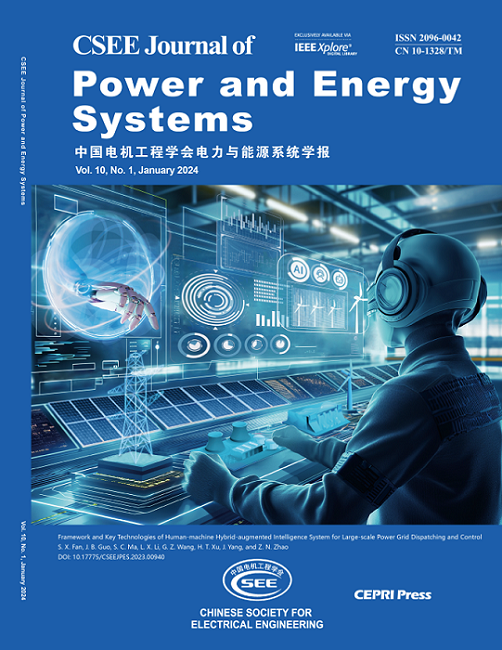Co-Located Battery Energy Storage Optimisation for Dynamic Containment Under the UK Frequency Response Market Reforms
IF 6.9
2区 工程技术
Q2 ENERGY & FUELS
引用次数: 0
Abstract
Accelerated development of battery technologies heightens an interest in co-locating battery energy storage systems (BESSs) with renewable power plants for stacking of multiple revenue streams such as frequency response services to AC grids. Frequency response market reforms in the UK introduce new end-state services and require evaluating techno-economic feasibility of co-location projects in new circumstances. This paper develops a BESS optimisation method to optimize capacity and operating strategy of a co-located BESS for providing latest Dynamic Containment (DC) services based on the UK perspective. BESS optimisation method simulates BESS delivering DC responses and following operational baselines for state of energy (SoE) restoration, as well as, coordinating with its co-located power plant. Then net present value of BESS co-location project is estimated from power flows across the system and maximised to suggest optimal BESS capacity, target energy footroom and/or headroom levels for baseline estimation, and possible SoE ranges suitable for energy interchange with its co-located power plant. BESS optimisation method is tested based on a particular transmission-level wind farm in the UK and discussed alongside operation and profitability of a BESS co-location project under frequency response market reforms.英国频率响应市场改革下的动态遏制共置电池储能优化
电池技术的加速发展提高了人们对电池储能系统(bess)与可再生能源发电厂的共同定位的兴趣,以堆叠多种收入流,如交流电网的频率响应服务。英国的频率响应市场改革引入了新的终端状态服务,并要求在新情况下评估共址项目的技术经济可行性。本文开发了一种BESS优化方法,以优化位于同一位置的BESS的容量和运营策略,以提供基于英国视角的最新动态遏制(DC)服务。BESS优化方法模拟BESS提供直流响应,并遵循能量状态(SoE)恢复的运行基线,以及与其位于同一位置的发电厂协调。然后,根据整个系统的功率流估计BESS共址项目的净现值,并将其最大化,以建议最佳BESS容量、基线估计的目标能量空间和/或净空空间水平,以及适合与其共址发电厂进行能源交换的可能SoE范围。基于英国某输电级风电场对BESS优化方法进行了测试,并与频率响应市场改革下BESS共址项目的运营和盈利能力进行了讨论。
本文章由计算机程序翻译,如有差异,请以英文原文为准。
求助全文
约1分钟内获得全文
求助全文
来源期刊

CSEE Journal of Power and Energy Systems
Energy-Energy (all)
CiteScore
11.80
自引率
12.70%
发文量
389
审稿时长
26 weeks
期刊介绍:
The CSEE Journal of Power and Energy Systems (JPES) is an international bimonthly journal published by the Chinese Society for Electrical Engineering (CSEE) in collaboration with CEPRI (China Electric Power Research Institute) and IEEE (The Institute of Electrical and Electronics Engineers) Inc. Indexed by SCI, Scopus, INSPEC, CSAD (Chinese Science Abstracts Database), DOAJ, and ProQuest, it serves as a platform for reporting cutting-edge theories, methods, technologies, and applications shaping the development of power systems in energy transition. The journal offers authors an international platform to enhance the reach and impact of their contributions.
 求助内容:
求助内容: 应助结果提醒方式:
应助结果提醒方式:


